Ozgur B. Akan
Fundamental Limits of Cooperative Integrated Sensing and Communications over Low-Earth Orbit THz Satellite Channels
Oct 21, 2025Abstract:Terahertz inter-satellite links enable unprecedented sensing precision for Low Earth Orbit (LEO) constellations, yet face fundamental bounds from hardware impairments, pointing errors, and network interference. We develop a Network Cram\'er-Rao Lower Bound (N-CRLB) framework incorporating dynamic topology, hardware quality factor $\Gamma_{\text{eff}}$, phase noise $\sigma^2_\phi$, and cooperative effects through recursive Fisher Information analysis. Our analysis reveals three key insights: (i) hardware and phase noise create power-independent performance ceilings ($\sigma_{\text{ceiling}} \propto \sqrt{\Gamma_{\text{eff}}}$) and floors ($\sigma_{\text{floor}} \propto \sqrt{\sigma^2_\phi}/f_c$), with power-only scaling saturating above $\text{SNR}_{\text{crit}}=1/\Gamma_{\text{eff}}$; (ii) interference coefficients $\alpha_{\ell m}$ enable opportunistic sensing with demonstrated gains of 5.5~dB under specific conditions (65~dB processing gain, 50~dBi antennas); (iii) measurement correlations from shared timing references, when properly modeled, do not degrade performance and can provide common-mode rejection benefits compared to mismodeled independent-noise baselines. Sub-millimeter ranging requires co-optimized hardware ($\Gamma_{\text{eff}}<0.01$), oscillators ($\sigma^2_\phi<10^{-2}$), and appropriate 3D geometry configurations.
HRTFformer: A Spatially-Aware Transformer for Personalized HRTF Upsampling in Immersive Audio Rendering
Oct 02, 2025Abstract:Personalized Head-Related Transfer Functions (HRTFs) are starting to be introduced in many commercial immersive audio applications and are crucial for realistic spatial audio rendering. However, one of the main hesitations regarding their introduction is that creating personalized HRTFs is impractical at scale due to the complexities of the HRTF measurement process. To mitigate this drawback, HRTF spatial upsampling has been proposed with the aim of reducing measurements required. While prior work has seen success with different machine learning (ML) approaches, these models often struggle with long-range spatial consistency and generalization at high upsampling factors. In this paper, we propose a novel transformer-based architecture for HRTF upsampling, leveraging the attention mechanism to better capture spatial correlations across the HRTF sphere. Working in the spherical harmonic (SH) domain, our model learns to reconstruct high-resolution HRTFs from sparse input measurements with significantly improved accuracy. To enhance spatial coherence, we introduce a neighbor dissimilarity loss that promotes magnitude smoothness, yielding more realistic upsampling. We evaluate our method using both perceptual localization models and objective spectral distortion metrics. Experiments show that our model surpasses leading methods by a substantial margin in generating realistic, high-fidelity HRTFs.
Fundamental Limits of THz Inter-Satellite ISAC Under Hardware Impairments
Sep 19, 2025Abstract:This paper establishes a theoretical framework for analyzing the fundamental performance limits of terahertz (THz) Low Earth Orbit (LEO) inter-satellite link (ISL) Integrated Sensing and Communications (ISAC) systems. We develop a unified, end-to-end signal model that, jointly captures the effects of extreme orbital dynamics, cascaded non-ideal hardware impairments, and micro-radian beam pointing errors. Through Bayesian Cram\'er-Rao Lower Bound (BCRLB) analysis, we derive the ultimate sensing accuracy for range and range-rate, revealing a quadratic ($1/f_c^2$) improvement in estimation variance with carrier frequency, which is ultimately floored by signal-dependent hardware distortion. For communication, we show that system performance is not power-limited but hardware-limited, deriving a closed-form capacity ceiling under the joint effect of phase noise and PA nonlinearity: $C_{\text{sat}} = \log_2(1 + e^{-\sigma_\phi^2}/\Gamma_{\text{eff}})$, where $\Gamma_{\text{eff}}$ is a proposed hardware quality factor. Our numerical results, based on state-of-the-art component data and the identified trade-offs, suggest that favorable operational conditions may exist in the sub-THz frequency range (200-600 GHz) where the quadratic sensing gain with frequency is balanced against hardware quality degradation. Power Amplifier (PA) nonlinearity emerges as the dominant performance bottleneck, exceeding other impairments by one to two orders of magnitude.
Information and Communication Theoretical Foundations of the Internet of Plants, Principles, Challenges, and Future Directions
Sep 10, 2025Abstract:Plants exchange information through multiple modalities, including chemical, electrical, mycorrhizal, and acoustic signaling, which collectively support survival, defense, and adaptation. While these processes are well documented in biology, their systematic analysis from an Information and Communication Technology (ICT) perspective remains limited. To address this gap, this article is presented as a tutorial with survey elements. It provides the necessary biological background, reformulates inter-plant signaling within ICT frameworks, and surveys empirical studies to guide future research and applications. First, the paper introduces the fundamental biological processes to establish a foundation for readers in communications and networking. Building on this foundation, existing models of emission, propagation, and reception are synthesized for each modality and reformulated in terms of transmitter, channel, and receiver blocks. To complement theory, empirical studies and state-of-the-art sensing approaches are critically examined. Looking forward, the paper identifies open challenges and outlines future research directions, with particular emphasis on the emerging vision of the Internet of Plants (IoP). This paradigm frames plants as interconnected nodes within ecological and technological networks, offering new opportunities for applications in precision agriculture, ecosystem monitoring, climate resilience, and bio-inspired communication systems. By integrating biological insights with ICT frameworks and projecting toward the IoP, this article provides a comprehensive tutorial on plant communication for the communications research community and establishes a foundation for interdisciplinary advances.
Flexure-FET-Based Receiver with Competitive Binding for Interference Mitigation in Molecular Communication
May 28, 2025Abstract:Molecular communication (MC), a biologically inspired technology, enables applications in nanonetworks and the Internet of Everything (IoE), with great potential for intra-body systems such as drug delivery, health monitoring, and disease detection. This paper extends our prior work on the Flexure-FET MC receiver by integrating a competitive binding model to enhance performance in high-interference environments, where multiple molecular species coexist in the reception space. Previous studies have largely focused on ligand concentration estimation and detection, without fully addressing the effects of inter-species competition for receptor binding. Our proposed framework captures this competition, offering a more biologically accurate model for multitarget environments. By incorporating competition dynamics, the model improves understanding of MC behavior under interference. This approach enables fine-tuning of receptor responses by adjusting ligand concentrations and receptor affinities, thereby optimizing the performance of the Flexure-FET MC receiver. Comprehensive analysis shows that accounting for competitive binding is crucial for improving reliability and accuracy in complex MC systems. Factors such as signal-to-noise ratio (SNR), symbol error probability (SEP), interferer concentration, and receptor dynamics are shown to significantly affect performance. The proposed framework highlights the need to manage these factors effectively. Results demonstrate that modeling interference through competitive binding offers a realistic system perspective and allows tuning of receiver response, enabling robust detection in environments with multiple coexisting species.
Zero-Trust Foundation Models: A New Paradigm for Secure and Collaborative Artificial Intelligence for Internet of Things
May 26, 2025Abstract:This paper focuses on Zero-Trust Foundation Models (ZTFMs), a novel paradigm that embeds zero-trust security principles into the lifecycle of foundation models (FMs) for Internet of Things (IoT) systems. By integrating core tenets, such as continuous verification, least privilege access (LPA), data confidentiality, and behavioral analytics into the design, training, and deployment of FMs, ZTFMs can enable secure, privacy-preserving AI across distributed, heterogeneous, and potentially adversarial IoT environments. We present the first structured synthesis of ZTFMs, identifying their potential to transform conventional trust-based IoT architectures into resilient, self-defending ecosystems. Moreover, we propose a comprehensive technical framework, incorporating federated learning (FL), blockchain-based identity management, micro-segmentation, and trusted execution environments (TEEs) to support decentralized, verifiable intelligence at the network edge. In addition, we investigate emerging security threats unique to ZTFM-enabled systems and evaluate countermeasures, such as anomaly detection, adversarial training, and secure aggregation. Through this analysis, we highlight key open research challenges in terms of scalability, secure orchestration, interpretable threat attribution, and dynamic trust calibration. This survey lays a foundational roadmap for secure, intelligent, and trustworthy IoT infrastructures powered by FMs.
Semantic Learning for Molecular Communication in Internet of Bio-Nano Things
Feb 12, 2025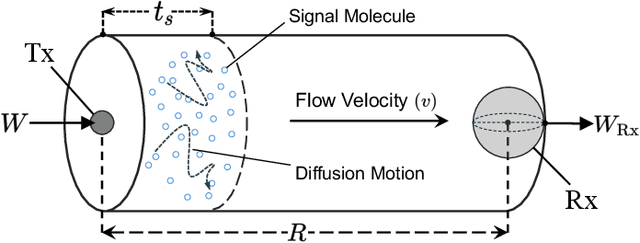
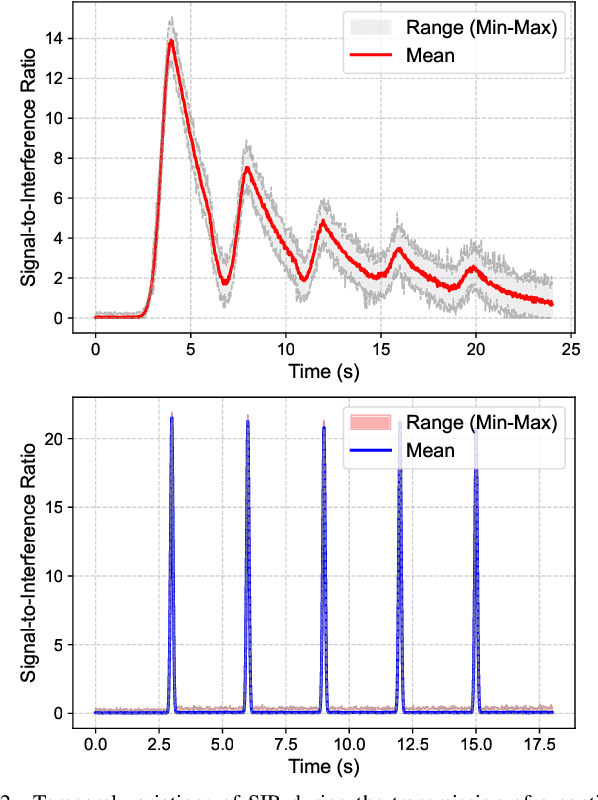
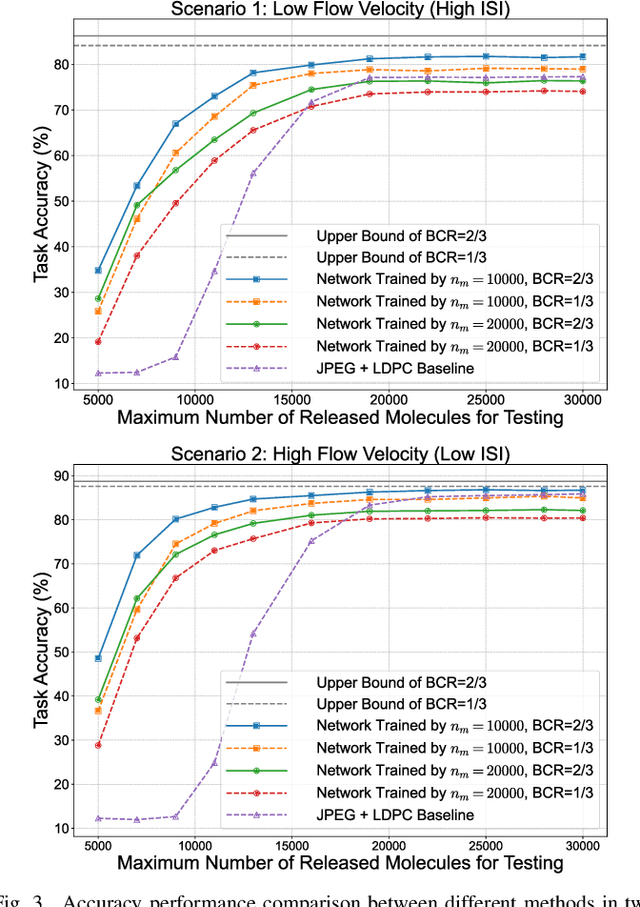
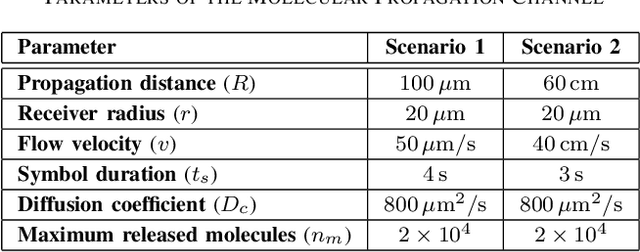
Abstract:Molecular communication (MC) provides a foundational framework for information transmission in the Internet of Bio-Nano Things (IoBNT), where efficiency and reliability are crucial. However, the inherent limitations of molecular channels, such as low transmission rates, noise, and inter-symbol interference (ISI), limit their ability to support complex data transmission. This paper proposes an end-to-end semantic learning framework designed to optimize task-oriented molecular communication, with a focus on biomedical diagnostic tasks under resource-constrained conditions. The proposed framework employs a deep encoder-decoder architecture to efficiently extract, quantize, and decode semantic features, prioritizing task-relevant semantic information to enhance diagnostic classification performance. Additionally, a probabilistic channel network is introduced to approximate molecular propagation dynamics, enabling gradient-based optimization for end-to-end learning. Experimental results demonstrate that the proposed semantic framework improves diagnostic accuracy by at least 25% compared to conventional JPEG compression with LDPC coding methods under resource-constrained communication scenarios.
Smell of Source: Learning-Based Odor Source Localization with Molecular Communication
Feb 10, 2025
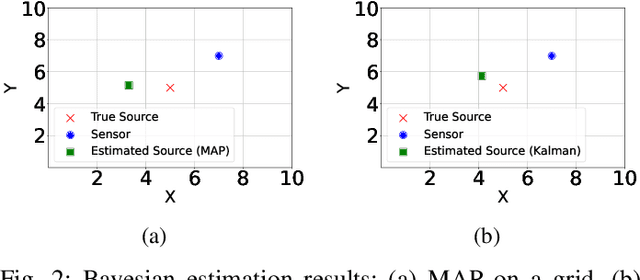


Abstract:Odor source localization is a fundamental challenge in molecular communication, environmental monitoring, disaster response, industrial safety, and robotics. In this study, we investigate three major approaches: Bayesian filtering, machine learning (ML) models, and physics-informed neural networks (PINNs) with the aim of odor source localization in a single-source, single-molecule case. By considering the source-sensor architecture as a transmitter-receiver model we explore source localization under the scope of molecular communication. Synthetic datasets are generated using a 2D advection-diffusion PDE solver to evaluate each method under varying conditions, including sensor noise and sparse measurements. Our experiments demonstrate that \textbf{Physics-Informed Neural Networks (PINNs)} achieve the lowest localization error of \(\mathbf{0.89 \times 10^{-6}}\) m, outperforming \textbf{machine learning (ML) inversion} (\(\mathbf{1.48 \times 10^{-6}}\) m) and \textbf{Kalman filtering} (\(\mathbf{1.62 \times 10^{-6}}\) m). The \textbf{reinforcement learning (RL)} approach, while achieving a localization error of \(\mathbf{3.01 \times 10^{-6}}\) m, offers an inference time of \(\mathbf{0.147}\) s, highlighting the trade-off between accuracy and computational efficiency among different methodologies.
Martian Dust Storm Detection with THz Opportunistic Integrated Sensing and Communication in the Internet of Space (IoS)
Dec 14, 2024



Abstract:This paper presents the Mars Dust Storm Detector (MDSD), a system that leverages the THz Opportunistic Integrated Sensing and Communications (OISAC) signals between Mars surface assets (rovers and landers) to extract environmental information, particularly dust storm properties. The MDSD system utilizes the multi-parameter sensitivity of THz signal attenuation between Martian communication devices to provide rich, real-time data on storm intensity, particle characteristics, and potentially even electrification state. This approach, incorporating HITRAN spectroscopic data and Martian-specific atmospheric parameters, allows for accurate modeling and analysis. The system's ability to repurpose THz ISAC signals for environmental sensing demonstrates an efficient use of resources in the challenging Martian environment, utilizing communication infrastructure to enhance our understanding of Mars' atmospheric dynamics. The system's performance is evaluated through extensive simulations under various Node Density Factors (NDFs), comparing different interpolation algorithms for dust storm intensity mapping. Results demonstrate that linear interpolation achieves superior accuracy (correlation >0.90) at high NDFs, while nearest-neighbor and IDW algorithms maintain complete spatial coverage in sparse networks. Error analysis identifies dust particle size uncertainty as the primary contributor to estimation errors, though the system shows resilience to Martian atmospheric variations. This work extends the opportunistic use of ISAC technology to planetary exploration, contributing to both Mars atmospheric monitoring capabilities and ISAC applications in the Internet of Space (IoS).
A Novel Framework of Horizontal-Vertical Hybrid Federated Learning for EdgeIoT
Oct 02, 2024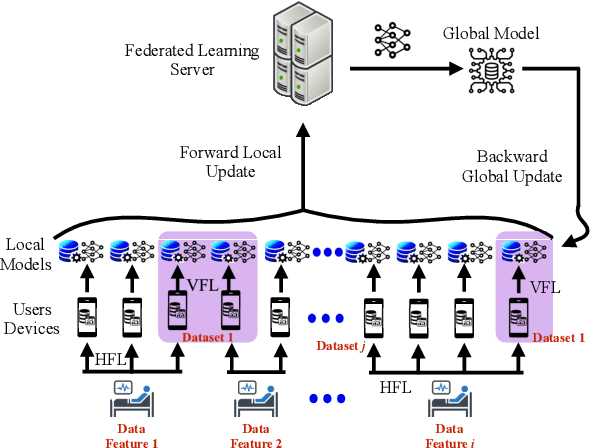
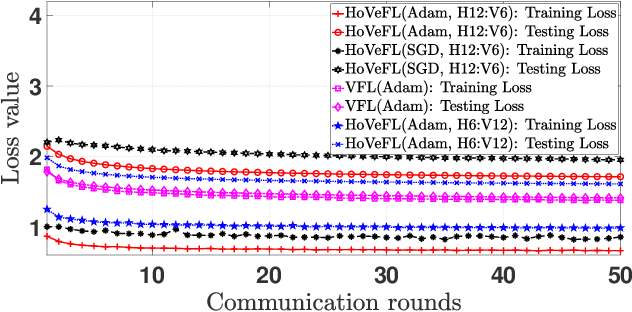
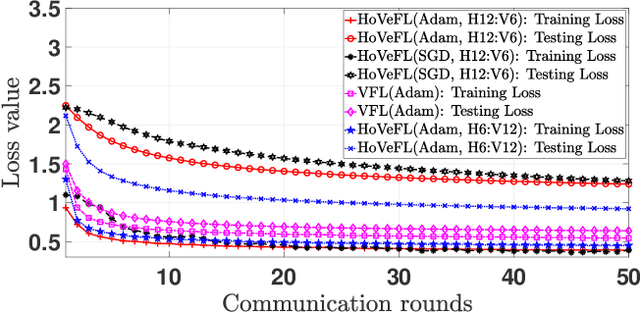
Abstract:This letter puts forth a new hybrid horizontal-vertical federated learning (HoVeFL) for mobile edge computing-enabled Internet of Things (EdgeIoT). In this framework, certain EdgeIoT devices train local models using the same data samples but analyze disparate data features, while the others focus on the same features using non-independent and identically distributed (non-IID) data samples. Thus, even though the data features are consistent, the data samples vary across devices. The proposed HoVeFL formulates the training of local and global models to minimize the global loss function. Performance evaluations on CIFAR-10 and SVHN datasets reveal that the testing loss of HoVeFL with 12 horizontal FL devices and six vertical FL devices is 5.5% and 25.2% higher, respectively, compared to a setup with six horizontal FL devices and 12 vertical FL devices.
 Add to Chrome
Add to Chrome Add to Firefox
Add to Firefox Add to Edge
Add to Edge